Buy Steel Shipping Containers | New And Used
Purchase Metal Containers in Your Area
HOW BIG?
Shop from a huge line of small steel shipping containers to extra large solutions.
Buying Steel Storage Containers & Conex Boxes
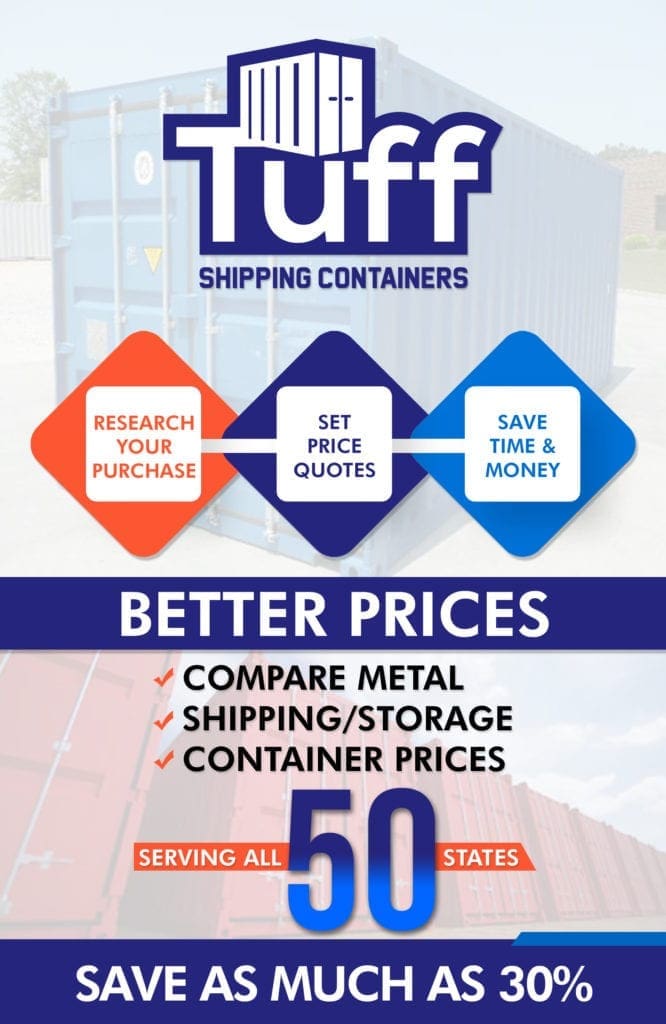 If you’re looking for a metal shipping container for your business, it’s important to know the average cost of shipping containers so you choose the right one.
If you’re looking for a metal shipping container for your business, it’s important to know the average cost of shipping containers so you choose the right one.
The average cost of conex shipping containers can vary greatly. Depending on the condition and characteristics of the container, prices can range from as little as $1,400 to upwards of $9,400.
If you are looking for a metal shipping container for your business there are a lot of options to consider. These choices can feel overwhelming.
Metal Shipping Containers
Sea Containers
Insulated Containers
Refrigerated Shipping Containers
But there are a few things you can do to ensure that you are making the right choice about your business storage needs. Being informed about the products available is the first step.
Steel Storage Container Basics
Shipping products in uniformly-sized containers has revolutionized trade and industry. Before this technology, it might take workers 10 days to unload a cargo ship. Now, it is done in a day or less.
Shipping containers, also known as “conex boxes” or “freight” containers, have many different purposes. They can be used for long-term industrial storage or temporary construction site usage. Due to their low cost and ease of transport, they are becoming a popular choice for retail businesses.
Storage containers vary based on size, condition, and special features. Most standard containers are eight feet wide, and eight feet, six inches in height. They range in length from 15 to 45 feet.
Shipping containers are generally made of steel. They tend to last a long time, depending on usage. Storage containers can become damaged, resulting in dents, rust, and even chemical contamination.
Buy 8 Foot Shipping Containers
| 8′ (ft) Container | External Dimensions: 8 ft (2.44 m) L x 7 ft 2 in (2.2 m) W x 7 ft 4 in (2.26 m) H |
Internal Dimensions: 7 ft 6 in (2.29 m) L x 6 ft 11 in (2.11 m) W x 6 ft 9 in (2.06 m) H |
Door Opening: 6 ft 10 in (2.1 m) W x 6 ft 4 in (1.95 m) H |
Cubic Volume: 351 ft3 (cubic ft) 9.95 m3 (cubic meters) |
Empty Weight: 2100 lbs. (950 kg) |
Load Capacity: 11,143 lbs. (5050 kg) |
Max Gross Weight: 13,243 lbs. (6000 kg) |
Uses: Storage, Housing, Retail, Agriculture, Emergency Shelters, Workshops, Shipping, Event structures
Average Cost: $1,200 to $3,400
GET QUOTEBuy 10 Foot Shipping Containers
| 10′ (ft) Container | External Dimensions: 9 ft 10 in (3 m) L x 8 ft (2.438 m) W x 8 ft 6 in (2.591 m) H |
Internal Dimensions: 9 ft 3 in (2.84 m) L x 7 ft 8 in (2.35 m) W x 7 ft 10 in (2.39 m) H |
Door Opening: 7 ft 8 in (2.34 m) W x 7 ft 5 in (2.28 m) H |
Cubic Volume: 561 ft3 (cubic ft) 15.1 m3 (cubic meters) |
Empty Weight: 2870 lbs. (1300 kg) |
Load Capacity: 19,530 lbs. (8860 kg) |
Max Gross Weight: 22,400 lbs. (10,160 kg) |
Uses: Storage, Housing, Offices, Retail, Agriculture, Equipment Storage, Workshops, Shipping, Pop-Up Shops
Average Cost: $1,500 to $3,750
GET QUOTEBuy 20 Foot Shipping Containers
| 20′ (ft) Container | External Dimensions: 19 ft 10.5 in (6.058 m) L x 8 ft (2.438 m) W x 8 ft 6 in (2.591 m) H |
Internal Dimensions: 19 ft 3 in (5.867 m) L x 7 ft 8 19⁄32 in (2.352 m) W x 7 ft 9 57⁄64 in (2.385 m) H |
Door Opening: 7 ft 8 1⁄8 in (2.340 m) W x 7 ft 5 3⁄4 in (2.280 m) H |
Cubic Volume: 1,169 ft3 (cubic ft) 33.1 m3 (cubic meters) |
Empty Weight: 4850 lbs. (2200 kg) |
Load Capacity: 61,289 lbs. (27,800 kg) |
Max Gross Weight: 66,139 lbs. (30,000 kg) |
Uses: Storage, Housing, Offices, Retail, Portable Classrooms, Agriculture, Equipment Storage, Workshops, Shipping, Emergency Shelter, Fitness Centers
Average Cost: $2,900 to $6,750
GET QUOTEBuy 40 Foot Shipping Containers
| 40′ (ft) Container | External Dimensions: 40 ft (12.192 m) L x 8 ft (2.438 m) W x 8 ft 6 in (2.591 m) H |
Internal Dimensions: 39 ft 5 45⁄64 in (12.032 m) L x 7 ft 8 19⁄32 in (2.352 m) W x 7 ft 9 57⁄64 in (2.385 m) H |
Door Opening: 7 ft 8 1⁄8 in (2.340 m) W x 7 ft 5 3⁄4 in (2.280 m) H |
Cubic Volume: 2,385 ft3 (cubic ft) 67.5 m3 (cubic meters) |
Empty Weight: 8380 lbs. (3800 kg) |
Load Capacity: 57,759 lbs. (26,199 kg) |
Max Gross Weight: 66,139 lbs. (30,000 kg) |
Uses: Storage, Offices, Retail, Portable Classrooms, Agriculture, Equipment Storage, Workshops, Shipping, Emergency Shelter
Average Cost: $2,900 to $6,750
GET QUOTEAverage Cost of Shipping Containers
The cost of a shipping container will depend on many different factors. These include age, condition, size, and delivery. In general, you can expect to pay between $1,400 and $3,000 for a used 20-foot shipping container. The average cost of a new 20-foot container generally will be between $2,000 and $5,000.
New vs. Used Steel Storage Containers
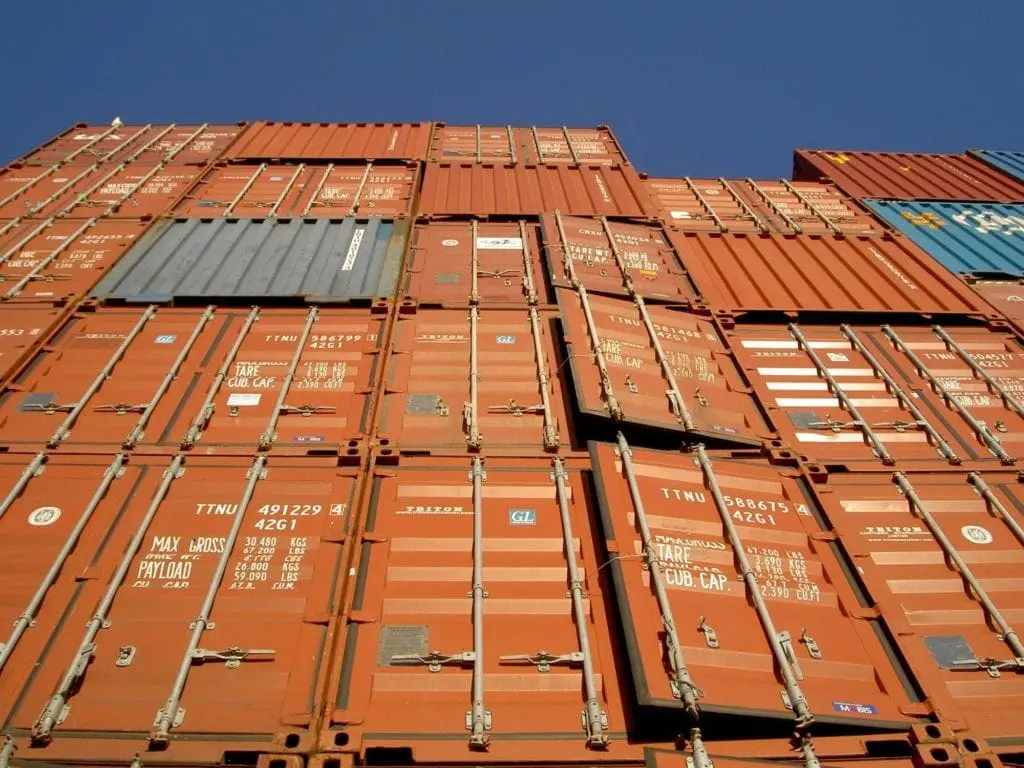
One major thing to consider when buying a metal shipping container is whether you need a new one. Since most shipping containers are made of steel, they are durable. However, rust and regular wear and tear can be factors if you are buying a used container.
Used containers are ones that can no longer be utilized for international transport. But that does not mean they are not appropriate for other purposes. The International Standards Organization (ISO) conducts inspections of all shipping containers in the United States. This organization gauges the quality and safety of each container and gives it a rating.
What condition you need the container to be in will depend on what you will use it for. Some basic things to look for or ask about when purchasing a used storage container are:
- Condition of the floorboards
- Rust
- Dents
- Door functionality
Depending on your type of business, you may need to buy new storage containers. This is often the case for shipping since container condition standards will be higher than for stationary storage. If you need a most structurally sound, reliable container for other uses, then buying new may be the way to go.
Even if not used for shipping, there are advantages to purchasing new containers. One is that you can be confident in its condition and expect a longer life for it. Also, you will not have to worry about things like the risk of chemical contamination from spills.
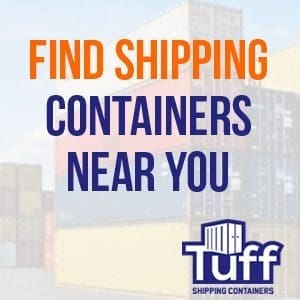
A third option is to buy “single-trip” containers. These have been used only once, usually in a one-way shipment. They are readily available because, when shipping long distances, companies prefer to sell the container rather than pay to have them returned.
This is comparable to buying a used car that is only a year or two old and has had a single owner. You can expect a relatively long lifespan for the container. You also can expect to pay a bit less than the price of a new container but perhaps more than for a used one.
Some retailers offer a warranty on containers, including used ones. This will depend on the overall condition of the container. A warranty will guarantee that any immediate issues with the storage container will be taken care of by the retailer.
Other Features
Customized features can impact the cost of a storage container. This includes size. For instance, “extra-wide” or “high-cube” containers can be upwards of 10 feet in width and nine feet, six inches in height. There can be other variations in dimensions as well.
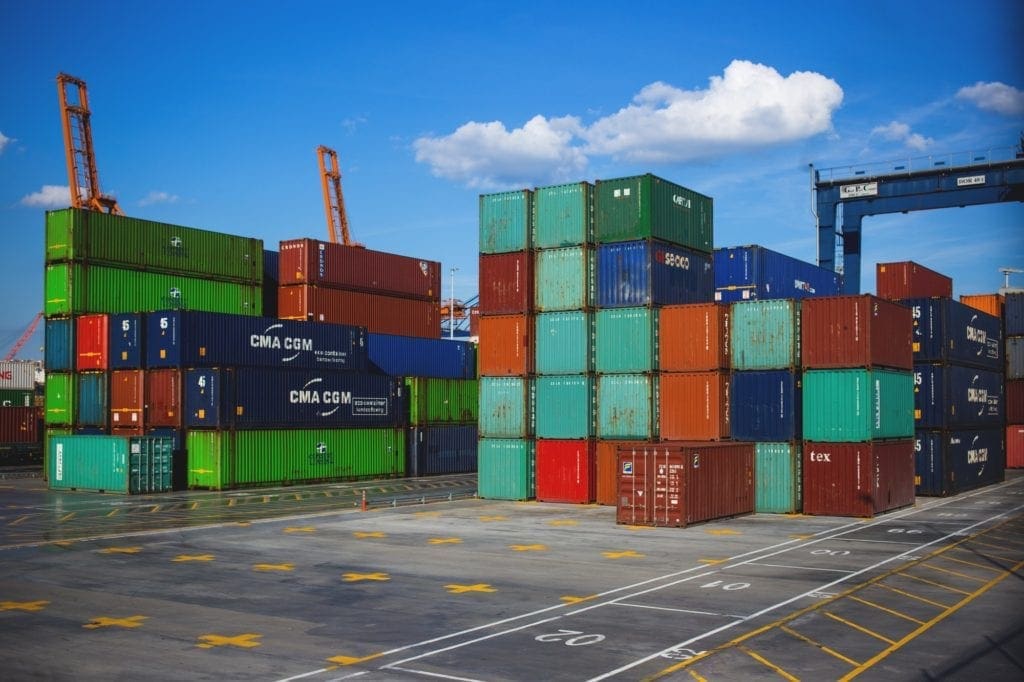
Purchasing containers outside the standard dimensions most likely will increase the cost. Custom-sized containers are available, but you can expect to pay 20 – 30 percent more for them. Also, they can be difficult to find.
There are other shipping container features to consider. They may have single or double door entries. Some can include windows, shelving, or other storage features.
Shipping containers usually have one of two types of security: exterior bolt locks or an interior locking system. If security is a priority for you, make sure that the locking system is of good quality and cannot be disabled. Sometimes exterior locking bolts are flimsy and susceptible to break-in. Interior locking systems provide more security but tend to cost more.
Shipping and Location
Most steel storage container retailers do not include delivery fees in their pricing. It is a good idea to ask if they do, and what the additional cost will be.
The delivery cost will depend on distance. If you choose a container that must be shipped a long distance, you can expect to pay more. Generally, retailers will charge a base fee for a certain radius and offer increased rates for delivery outside of that area.
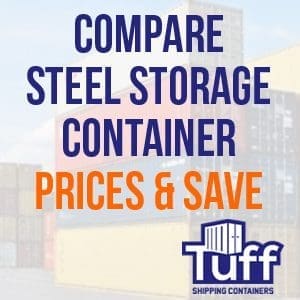
Depending on how many containers you need, you can anticipate a one-week delivery time. Although, some retailers may be able to deliver in as little as 24 hours. If your storage container need is time-sensitive, be sure to mention this in your inquiry.
Another thing that may increase the cost is if the delivery location is difficult to access. Discuss any impediments you might suspect with your retailer so that there are no surprise delivery fees down the road.
This goes for the area where the storage area will rest. In general, a 20-foot shipping container will need approximately 75 feet of clearance. A 40-foot container will need closer to 100 feet. For most containers, a minimum of 12 feet width and 20 feet high clearance is sufficient.
A concrete pad is ideal for placing storage containers. Another consideration is if the area is prone to flooding.
One final thing to consider regarding location is permitting. Regulations vary by location. Check beforehand to see if there are fees associated with having a storage container on your property.
In general, shorter storage times have less rigorous permitting restrictions. Temporary use permits are typical for shorter durations. These will be much less onerous than obtaining a permit for a permanent structure.
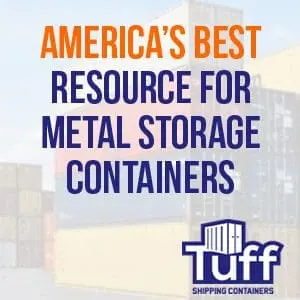
Urban or dense residential areas most likely will require a permit, even for short periods of use. Construction and retail sites almost always require a permit. More rural areas, such as farmland, probably will not warrant a permit, but it is a good idea to check anyway. Your local county or municipal office should have this information.
Failure to comply with permitting restrictions could result in hefty fines for your business. For complex situations, or if you are uncomfortable with the permitting process, consider hiring a “permit expediter.” They will be familiar with local requirements and can handle all aspects of the permitting process for you.
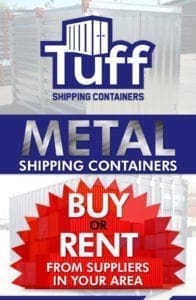
Renting vs. buying Steel Shipping Containers
One final thing to consider when evaluating the cost of storage containers and Conex boxes is the length of time you need it for. A good rule of thumb is that if you will be using it for two years or more, buying is your best bet.
But there are advantages to renting as well. Costs per container can be under $75 a month. Another advantage is that you do not have to worry about reselling the container once your project is completed. This is often a great option for temporary construction projects that only last a few months.
Find the Metal Storage Container That Is Right for You
The average cost of shipping containers depends on many factors. But do not be overwhelmed by the many choices to make when selecting storage containers for your business. The flip side is that you have a lot of options in terms of size, condition, and features.
And this means there is a wide range of cost options as well. So, you can be sure to find a product that meets your business needs at a price that is suitable.
Maximizing Your Investment: Tips for Buying High-Quality Shipping Containers
Shipping containers have become increasingly popular in recent years as a versatile solution for storage, shipping, and even repurposing as homes or offices. However, not all shipping containers are created equal, and buying a low-quality container can lead to costly repairs, safety hazards, and decreased functionality. Here are some tips for maximizing your investment by purchasing high-quality shipping containers.
- Determine Your Needs: Before you start shopping for shipping containers, it’s important to determine your specific needs. Consider factors such as size, condition, and intended use. Do you need a new or used container? What size container do you need? What features or modifications are necessary to meet your needs? Answering these questions will help you narrow down your options and make a more informed purchase.
- Inspect the Container: When purchasing a shipping container, it’s crucial to inspect it thoroughly for signs of damage or wear. Look for rust, dents, or holes in the walls, roof, and floor. Check the doors to ensure they open and close smoothly, and make sure the locking mechanism is functional. Inspecting the container in person allows you to assess its condition and identify any potential issues before making a purchase.
- Consider the Grade: Shipping containers are typically graded based on their condition. The highest grade is “new,” which refers to containers that have never been used for shipping. Grade A containers are gently used and may have a few minor scratches or dents. Grade B containers have more noticeable signs of wear but are still structurally sound. Grade C containers are the lowest quality and may require significant repairs before use. Choosing a higher-grade container can save you money in the long run by reducing the need for repairs and increasing the container’s lifespan.
- Choose a Reputable Dealer: When buying a shipping container, it’s important to choose a reputable dealer. Look for a company with a proven track record of selling high-quality containers and providing excellent customer service. Read reviews and ask for references to ensure you’re working with a trustworthy seller. A reputable dealer will also be able to provide you with all the necessary documentation, such as a bill of sale and inspection report.
- Consider Modifications: Shipping containers can be modified to meet your specific needs. Common modifications include adding windows, ventilation, insulation, and electrical wiring. Before purchasing a container, consider the modifications you need and make sure the container can accommodate them. Choosing a container that already has the necessary modifications can save you time and money on customization.
- Think Long-Term: Buying a shipping container is an investment, so it’s important to think long-term. Consider the intended lifespan of the container and choose one that will meet your needs for years to come. Investing in a high-quality container may cost more upfront but can save you money in the long run by reducing the need for repairs or replacement.
In conclusion, purchasing a high-quality shipping container requires careful consideration of your specific needs, thorough inspection, and working with a reputable dealer. By following these tips, you can maximize your investment and ensure your container meets your needs for years to come.
RESOUCE CENTER:
New Vs Used Metal Shipping Containers
Finding the Best Deals on Metal Shipping Containers: Tips and Tricks